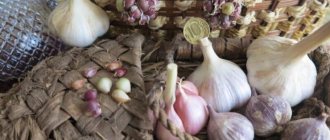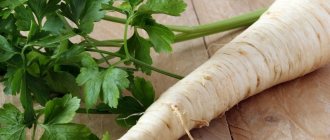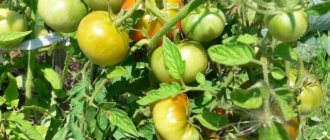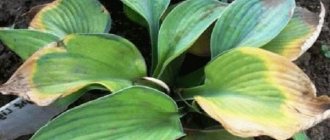Nature is generous with fruits that are rich not only in nutritional, but also beneficial and even medicinal properties.
Such plants include parsnip, which is compared even with ginseng root for its unique healing qualities.
The Latin root pastus in the name Pastinaca sativa translates as “food, feed,” and mankind has known this means of subsistence long before the beginning of our era.
The root vegetable of parsnip resembles the root of parsley, together with which it is part of the Umbelliferae family.
Most herbs, carrots, and celery also belong to this family.
Due to the similarity of the parsnip root with these vegetables, it is popularly called white carrots. And for its nutritional value and benefits, parsnips are sometimes called “white borscht”.
The use of vegetable parsnips in cooking is extremely wide. This is both a seasoning for the first and second hot courses, and the basis of independent dishes, side dishes, and a necessary element of winter preparations - pickles and marinades.
The unique aroma and exquisite taste serve as an excellent appetite stimulant, making all dishes using parsnips especially desirable.
The use of white parsnip root in traditional medicine recipes is relevant:
- for inflammation of the respiratory tract – helps to cope with cough;
- for pain caused by kidney stones;
- if necessary, relieve vasospasm;
- as a sedative;
- as a diuretic.
Pharmacists use the seeds of the parsnip plant to obtain effective drugs recommended in official medicine by dermatologists.
Planting and caring for parsnips
- Planting: sowing seeds in the ground - from mid to late April or before winter, at the end of October. Sowing seeds for seedlings - in mid or late March, planting seedlings in the garden - in mid-May.
- Lighting: bright sunlight or partial shade.
- Soil: moist, loamy, sandy loam or peaty, neutral reaction.
- Watering: when growing in moist soil, 4-5 abundant waterings are sufficient during drought, but during the season with normal rainfall, watering is not necessary.
- Feeding: 3-4 times per season with mullein solution, ash infusion and liquid mineral complexes: a week after planting and again, three weeks later - with nitrogen fertilizer, and from the second half of July - with potassium and phosphorus.
- Reproduction: seed.
- Pests: caraway moth, striped stink bug, field bug and aphid.
- Diseases: septoria, cercospora, wet bacterial rot, black rot (or alternaria), white and gray rot of root crops.
Read more about growing parsnips below.
Parsnip vegetable - description
The stem of parsnip is from 30 to 200 cm high, erect, rough, grooved, faceted, sharply ribbed, pubescent and branched in the upper part. The leaves are imparipinnate, consisting of 2-7 pairs of lobed or large-serrate oval, more or less pubescent leaflets, short-petiolate in the lower part, sessile in the upper part.
The parsnip root, ripening in the first year, is white, thick, aromatic and sweet in taste, sometimes round like a turnip, sometimes cone-shaped like a carrot, and dirty yellow when cut. Flowers with a yellow corolla - small, regular, bisexual, collected in a complex umbrella-shaped inflorescence consisting of 5-15 rays - bloom in the second year. The fruit of parsnip is round-oval, flattened, dirty yellow in color.
Parsnips are close relatives of garden plants such as carrots, parsley, fennel, dill, celery, coriander and lovage. From our article you will learn how to plant and care for parsnips, what varieties of parsnips exist for open ground, how to grow parsnip seedlings, what is the time frame for planting parsnips in the ground, when to plant parsnips in the middle zone, as well as how to plant and care for parsnips in open ground.
- Watercress: growing in the garden and at home
Planting sorrel before winter
Sorrel is a frost-resistant perennial that grows well in black soil and other well-moistened soils. Humus is added to the top layer of soil, and the ground is thoroughly harrowed. Seeds are planted in late autumn, with the onset of the first frost. To do this, the soil is moistened, and holes 1.5 cm deep are prepared for the seeds. A distance of 15 cm is left between the rows, and 5 cm between the seeds. Level the soil and compact it with a rake, and then cover it with fallen leaves or snow.
1 g of sorrel seeds contains up to 1,500 future plants
The best predecessors of sorrel are cabbage, dill, lettuce and radishes.
Growing parsnips from seeds
Sowing parsnip seeds
Growing and caring for parsnips begins with sowing the seeds. Parsnips are the most cold-resistant of root crops, so the seeds could be sown simply in the ground as soon as the soil warms up. But since parsnips sprout very poorly due to the high content of essential oils in the seeds, it is, of course, better to grow them using seedlings.
Before sowing, large parsnip seeds must undergo special treatment: first they are soaked for a day in warm water, which is changed as soon as it cools down, then the seed is treated with a growth stimulant - Heteroauxin, Epin or Zircon, and only after that it is sown in peat pots filled with soil mixture based on peat. The substrate can be purchased at the store or made from garden soil, peat, sand and perlite - the main thing is that it is light and porous. Before sowing, the substrate must be sifted and steamed in the oven or poured with boiling water for disinfection.
The pots are filled with a damp substrate, compacted so that it is at least a centimeter below the edge of the container, 2-3 parsnip seeds are placed in each pot on the surface and sprinkled on top with a thin layer of the substrate, after which the pots are placed on a pallet and covered film.
Growing parsnip seedlings
While waiting for germination, lift the film that covers the crops every day for 7-10 minutes for ventilation. Parsnip seeds, as already mentioned, due to the presence of essential oils in them, are difficult to germinate, so you will have to wait at least two weeks for the first sprouts. As soon as they appear, the film can be removed and the pots moved closer to the light.
How to care for parsnips during the seedling period? Growing parsnips requires long daylight hours - for normal development of seedlings, a parsnip day should last at least 14 hours, so if necessary, be prepared to provide additional lighting for the seedlings. Watering the seedlings is carried out as the top layer of soil in the pots dries. Try not to over-water the plants, otherwise they may get sick and even die from stagnation of moisture in the roots.
Parsnip picking
Root plants do not tolerate picking well, which is why they are sown not in common boxes, but in separate containers. When the seedlings form the first pair of true leaves, you need to select the strongest of them in each pot for further growth, and pinch off the rest above the surface of the substrate, so as not to injure the root of a strong seedling by pulling it out.
About 10 days before planting seedlings in open ground, they begin to expose them to the street for some time every day for hardening, gradually increasing the duration of the seedlings’ stay in the fresh air.
Return of the “white root”, or How to grow parsnips
One of the main food products - this is exactly how parsnip was called in Rus' until the 18th century, or, as it was also called, “white root”.
But as soon as carrots and potatoes brought from overseas countries appeared in local markets, the former favorite was out of business. Meanwhile, parsnips are lower in calories than potatoes and more healthy than carrots (the “white root” is especially rich in potassium, silicon and phosphorus).
But now it is remembered not so much for reasons of usefulness, but because of the growing popularity of eco-gardening, in which the emphasis is on natural balance and the rejection of chemicals. Parsnips do not require such treatment, since few pests will covet them. And now these fragrant root vegetables are showing off on the shelves again. Moreover, parsnip dishes are already offered on the menus of gourmet restaurants.
Interest arose and a proposal appeared: breeders developed new varieties. One of them is 'Aromata'. As the name suggests, this is a particularly aromatic new varietal. Its creamy yellow root vegetables are tender, sweet and aromatic and are best eaten raw, grated and used as a salad base. At the same time, the parsnip of this variety is as unpretentious and hardy as its ancestors.
Planting parsnips in open ground
When to plant parsnips in open ground
Parsnips are planted in open ground in mid-May, when the seedlings are 28-30 days old. At this time, as a rule, return frosts are already behind and the soil has already warmed up sufficiently. Parsnips are planted in the Moscow region at approximately the same time, adjusted for spring weather.
Soil for parsnips
Give the parsnip an area that is well lit by the sun, although it can grow in partial shade. Moist peat, sandy loam and loamy soils with a neutral reaction are most suitable for parsnips. Acidic soils are contraindicated for parsnips, so they must be limed.
Avoid growing parsnips after plants such as carrots, parsley, celery, parsnips and other root vegetables, as they all share common diseases and pests. The best predecessors for parsnips are considered to be onions, cabbage, beets and potatoes, especially if fertilizers were applied to their planting - parsnips grow better on soils fertilized in advance, so the area for it needs to be prepared in the fall: the soil is freed from weeds and, if there are no predecessors for organic matter was introduced, the area with rotted manure was dug up at the rate of half a bucket per m² of area.
In the spring, before planting seedlings in the ground, the soil is dug up again, leveled and raised beds are formed.
How to plant parsnips in open ground
Holes are made in the garden bed at a distance of 10-12 cm from each other in the row and the row spacing is no narrower than 40 cm. The depth of the holes should be such that the seedling along with the peat pot can fit into it. If you sowed parsnips in plastic pots, water the seedlings before transplanting and carefully transfer them from the pots into the holes along with a lump of earth. After planting, water the garden bed.
Planting parsnips before winter
Pre-winter sowing of parsnips is carried out before mid-October in previously (preferably in the spring) prepared soil. Since the seeds of parsnips are large, they are sown in threes at a depth of 3-4 cm in holes located at a distance of 10-12 cm from each other with a row spacing of 40-45 cm. Winter sowing of parsnips is better because in the spring the seedlings appear very quickly . The emerging shoots are thinned out in the same way as seedlings - the strongest sprout is left in the hole, and the rest are plucked out. We will tell you how to care for parsnips in the next section.
- Tomatoes - the main points of pruning stepsons
Principles of autumn planting
Sowing vegetables in the autumn has a number of advantages:
- saving time during spring sowing;
- the ability to harvest the first harvest 2-3 weeks earlier;
- you can use seeds that expire this year;
- vegetables and herbs grow stronger and healthier.
This method also has several disadvantages:
- early germination and death of seedlings;
- Seeds can only be planted in light, fertile soils;
- if the area is flooded in the spring, most of the plants will die;
- It is advisable to plant only frost-resistant crops.
When choosing a place for sowing, you should take into account the characteristics of each specific crop being planted. In any case, water should not stagnate in this place in autumn and spring, and snow cover should not accumulate over the winter. The furrows in the garden bed should be made less deep than during spring planting, and the seeds for planting should be selected 20-25% larger. They are covered with peat and humus, and covered with spruce branches or straw on top.
Parsnip care
How to grow parsnips
Growing parsnips in open ground involves performing procedures that are familiar to every gardener - watering, loosening the soil between rows, weeding and fertilizing. Overall, parsnips are surprisingly unpretentious. The first loosening is carried out when seedlings appear or when you are sure that the seedlings have started. Then the soil is loosened after each watering or rain.
Watering parsnips
Parsnips are moisture-loving and especially need water at the stage of root crop formation. From a lack of water, the leaves of the plant become pale, their growth slows down, and the parsnip may even shoot out an arrow, while the root crops crack, become rough, dry and fibrous. And from excess moisture, parsnips can get fungal diseases.
So how to water parsnips? If it grows in moist soil, 4-5 deep waterings in dry weather will be enough, but if it rains regularly in the summer, then it is likely that you will not need to water the parsnip. After watering, it is convenient to loosen the soil in the area and remove weeds. But keep in mind that in hot, dry weather, parsnip leaves emit a caustic essential oil that causes burns, so try to work on the site after sunset or early in the morning.
Parsnip feeding
During the growing season, parsnips are fed 3-4 times. How to fertilize parsnips? Fertilizers should be applied only in liquid form - mullein diluted with water in a ratio of 1:10, an infusion of ash or a solution of mineral fertilizers. A week or two after planting the seedlings, they are fed with nitrogen fertilizers, after another three weeks the nitrogen fertilizing is repeated, and from the second half of July they switch to fertilizing parsnips with potassium and phosphorus fertilizers.
However, if you grow a plant in fertile soil, you can do without fertilizing, especially if fertilizers were applied when preparing the site.
The influence of moon phases on plants
- The new moon is the worst time for gardening work. Do not plant or replant anything. This unfavorable period lasts three days, the day before the new moon, the new moon and the day after.
- Growing Moon - The Moon grows itself and pulls up the energy and juices of plants. This is the best time to work with plants whose fruits ripen above the ground (greens, herbs, fruits, vegetables, flowers). You can plant, replant, graft, and so on.
- Full moon - during this period it is also not recommended for planting and replanting plants, but it lasts one day. You can do weeding, fertilizing, and treating the garden from pests.
- Waning Moon - juices and energy are directed down to the roots, so try to work with root vegetables, bulbous ones.
See also: Dates for planting cucumber seedlings in the Urals in 2021 according to the lunar calendar in open ground and greenhouses
Pests and diseases of parsnip
Parsnip diseases
Parsnips suffer from the same diseases as other members of the Umbrella family: septoria, cercospora, wet bacterial rot, black rot (or Alternaria), as well as white and gray rot of root crops.
Septoria blight is manifested by the formation of numerous medium-sized spots on the leaves of the plant without clear boundaries, which gradually darken and become brownish-brown. Affected plants turn yellow and dry out. Septoria disease progresses in cool weather against a background of high air humidity. Penetration of infection occurs through the stomata.
Cercospora blight can be recognized by irregularly shaped yellowish or dirty-brown spots up to 6 mm in diameter that appear on the leaves and stems of the plant. As the disease progresses, the spots in the middle fade, and the border around them becomes darker. The edges of the affected leaves rise and curl slightly. On the stems, elongated reddish-brown spots appear depressed. Sick plants lag behind in development, their leaves turn yellow and dry.
Wet bacterial rot is a widespread disease, especially in conditions of unstable temperature and high humidity. It affects root crops both during storage and in the field. The disease begins with rotting in the tail part - first, dark watery-oily spots appear on the plant, then in their place depressions with a rotting, fetid mass are formed, which flows from the fruit in the form of mucus, which is why the infection spreads to other plants very quickly.
Alternaria, or black rot, develops mainly already in storage: slightly depressed dark spots appear on root crops, on which a dark olive coating forms in damp weather. In cross-section, the affected tissues are coal-black in color.
White rot (botrytis) and gray rot (sclerotinia) differ in the color of the coating that forms on root crops. When the disease is white rot, the coating is white, in the form of flakes with black sclerotia of the fungus, and gray rot covers the root crops with a gray fluffy coating. These diseases are most harmful in warm weather with high humidity.
Processing parsnips
To prevent fungal diseases from affecting parsnips, we recommend a set of measures, including:
- compliance with crop rotation - parsnips can be returned to the site again no earlier than after 3-4 years;
- strict compliance of care activities with the rules of agricultural technology;
- thorough preparation of the site before planting, including the removal of remnants of the previous crop;
- pre-sowing half-hour treatment of seeds in water at a temperature of 50 ºC, followed by rapid cooling and drying;
- proper storage of root vegetables.
If, despite the strict fulfillment of all these conditions, a fungus appears on the site or in the storage facility, immediately remove the diseased specimens and treat healthy ones with one percent Bordeaux mixture, Fundazol or Topsin-M.
Parsnip pests
Of the insects, the most dangerous for parsnips are caraway moth, striped stink bug, field bug and aphid.
- When to plant and bury green manure - timing
Caraway moth destroys parsnip testes. Its caterpillars penetrate roots, stems and leaves and feed on their tissues. When flowering begins, they entangle the parsnip inflorescences in a web, feeding on pedicels, flowers and seeds, after which they crawl back into the stem. In order to destroy caterpillars, plants are sprayed with a decoction of tomato tops: 3.5 kg of tops are crushed, poured with 10 liters of boiling water, left for two days, filtered and 40 g of grated laundry soap added to the infusion.
The striped shield insect lives off the juice of young ovaries and buds, from which they die.
The field bug is a greenish-gray bug reaching a length of 4 mm. Females lay eggs in the tissue of the plant, and the larvae that emerge from them feed on the juice of the leaves and tops of parsnip shoots. At the puncture sites, the tissue dies, turns yellow and dries, and the toxic saliva of these pests leads to seed infertility. In warm areas, 3-4 generations of bedbugs can form during the growing season. You can destroy the field bug and striped stink bug with Karbofos or Aktellik.
Aphids are one of the most dangerous and at the same time most prolific pests. She, like bedbugs, feeds on plant sap, causing them to wither, become deformed and stop developing. In addition, she suffers from incurable viral diseases. You can fight it using traditional methods, or you can use Antitlin, Biotlin, or the same means as in the fight against the Colorado potato beetle - Confidor, for example.
As a preventive measure, it is necessary to fight weeds, and after harvesting, remove plant debris from the site and dig the soil deeply.
Harvesting
Yellow umbrella inflorescences will appear only in the second year at the height of summer, and the seeds will ripen by autumn. Harvest no earlier than October and store in damp sand in a cool room. It is in the fall, before the first frost, that root vegetables gain weight and acquire a characteristic aroma.
Small root vegetables can be easily pulled out by hand, while thicker ones can break in two. To prevent this from happening, pry up the root crops with a garden fork when digging.
You can leave the root vegetables to overwinter in the garden (then they will be more fragrant), but be sure to cut off the tops and hill up the plant. And don't forget to dig up the parsnips in early spring, before the new leaves appear, otherwise the roots will become woody and tasteless.
Root crops of the 'Turga' variety can remain in the garden until spring. Their long yellowish “roots” are absolutely not afraid of frost.
'White Gem' produces snow-white roots that are short and wide at the top with sweetish flesh. This is one of the few varieties that are perfect for growing in heavy soils.
Collecting seeds
For this purpose, choose several more powerful plants. Parsnips that bloom in the first year of cultivation are completely unsuitable for collecting seed. The inflorescences that appear in the second year after sowing produce the largest and best germination seeds. Do not delay collecting seeds, otherwise they will fall off. The best time to collect seed is as soon as the umbels turn yellow-brown or light brown. Then carefully sift the seeds through a sieve, dry (this will take several days) and store until spring in a dark, cool and dry place.
Related article: Dill plant: planting and care in open ground, photo, how to grow at home
Tip : parsnip leaves and stems contain a toxic substance, furocoumarin, which, when exposed to the sun on the skin, causes an inflammatory reaction - redness and itching, sometimes even blisters. Therefore, before you go to the parsnip bed, make sure you wear clothing that protects exposed areas of your body and gloves (or wash your hands immediately after harvesting).
Photo: Florapress/Gilles le Scanff + Joëlle Caroline Mayer, Friedrich Strauß, Bingenheimer Saatgut, Das Gartenarchiv/Kahl, Die Grüne Kamera/Dorothea Baumjohann, Florapress + G. Médias/Christine Ann Föll, Sativa Rheinau.
Harvesting and storing parsnips
Harvesting begins in the fall, when the parsnip leaves begin to die. How to harvest parsnips? Root crops are dug up with a pitchfork, trying not to damage them, and if necessary, leaving them in the soil until winter - low temperatures only make parsnips tastier. Because parsnip tops can cause burns on your hands, wear gloves when working. Root vegetables are stored in the same way as carrots - in boxes with sand at a temperature of 0-2 ºC and an air humidity of 80-85%, but they soften from storage in the cellar, so in warm regions where there are no frosty winters, it is better not to store them at all dig them up - they overwinter well in the ground.
Types and varieties of parsnips
There are not so many types and varieties of parsnips in cultivation. Types of parsnips are divided into round and long based on the shape of the root crops. Varieties belonging to the round species are unpretentious in care, and parsnips with long roots require well-developed soil. According to the timing of ripening, parsnip varieties are divided into early, ripening in 110-120 days from germination, mid-ripening, which will take from 120 to 140 days, and late, ripening in 140 or more days.
We offer you the best varieties of parsnips:
- Round - an early ripening variety with a rounded-flattened cone-shaped root crop of a grayish-white color weighing up to 170 g with white, strong-smelling pulp with a grayish-white core;
- Kulinar is also an early ripening variety, reaching ripeness in 95-105 days with a small but spreading leaf rosette and a cone-shaped, creamy root crop weighing up to 140 g, roundly flattened at the base. The pulp is white with a grayish core;
- White stork is an early variety with a white smooth root crop weighing 90-110 g with white and juicy pulp of good taste. The variety has good keeping quality;
- Boris is an early-ripening, highly productive variety with cone-shaped cream-colored roots and aromatic white pulp of excellent taste;
- Hormon is an early ripening variety with white cone-shaped root crops up to 22 cm long and up to 5 cm in diameter, completely immersed in the soil. The weight of the fruit is 100-130 g, they are used as a side dish, fried and boiled, or as a seasoning;
- Delicacy - a mid-early, well-stored variety with rounded root vegetables weighing from 200 to 350 g and up to 8 cm long with aromatic white pulp with yellowish spots;
- The best of all is a mid-early variety with a conical, pointed white root crop weighing up to 200 g with white, tasty, aromatic pulp;
- Petrik is a mid-season and high-yielding dietary variety of universal use, resistant to disease, with a white conical root crop up to 35 in length and up to 8 cm in diameter with juicy, dense and aromatic gray-white pulp;
- Gladiator is a mid-season productive hybrid with smooth, cone-shaped white root crops and white, aromatic, sugary pulp;
- Guernsey - a high-yielding late variety with well-stored root crops weighing up to 200 g and up to 25 cm long with white, aromatic, sweet pulp of excellent taste;
- Student is a late-ripening, drought-resistant variety, characterized by high yield, with white cone-shaped root crops up to 30 cm long and weighing up to 160 g with white, very aromatic pulp of excellent taste.
In addition to those described, the Serdechko variety and the foreign varieties Hollow Crown, Contess, Javelin and Tender and True have proven themselves well in cultivation.
Properties of parsnip - harm and benefit
Medicinal properties of parsnip
Parsnip contains carotene, ascorbic acid, carbohydrates, essential oil, mineral salts, B vitamins (B1, B2, B3). The carbohydrates contained in the root vegetables of the plant are easily digestible; they also contain a significant amount of potassium, which promotes blood circulation, has a beneficial effect on the nervous system and improves digestion. The complex of vitamins, micro- and macroelements found in parsnips is close in composition to that found in spinach.
Parsnip leaves are rich in essential oils, and its root contains three times more sucrose and fructose, which are harmless to diabetics, than carrots. The uniqueness of parsnip is that it contains substances that relieve spasms. If you use grated parsnip root correctly and on time, you can relieve liver and kidney colic.
Parsnip has an expectorant, tonic and analgesic effect; in ancient times it was used as a diuretic for edema, and also as a means of strengthening the walls of capillary vessels, increasing appetite, and stimulating sexual activity.
Currently, parsnips are used for the prevention and treatment of cardiovascular diseases. Furocoumarins contained in parsnips have been experimentally shown to increase skin sensitivity to ultraviolet rays, and this property has been used to repigment discolored skin areas in patients with vitiligo disease.
The preparations Eupiglin and Beroxan are prepared from parsnip fruits, which are used to treat vitiligo and baldness; they are the raw material for the production of furocoumarin pastinacin, which is a vasodilator that is used to prevent angina attacks in case of cardiac neuroses and coronary insufficiency, as well as other spastic phenomena.
Our ancestors used a tincture of parsnip root in moonshine to stimulate appetite and improve mood. And an aqueous infusion of parsnip root was used to restore strength in seriously ill patients. Parsnip infusions have a sedative effect, so they are used for insomnia and neuroses.
Parsnip - contraindications
You should not use parsnips and preparations made from them if you have an individual intolerance to the product and photodermatosis - inflammation of the skin due to increased sensitivity to the sun, since parsnips contain substances that make this sensitivity even stronger.
Parsnips are not recommended for older people and small children.











